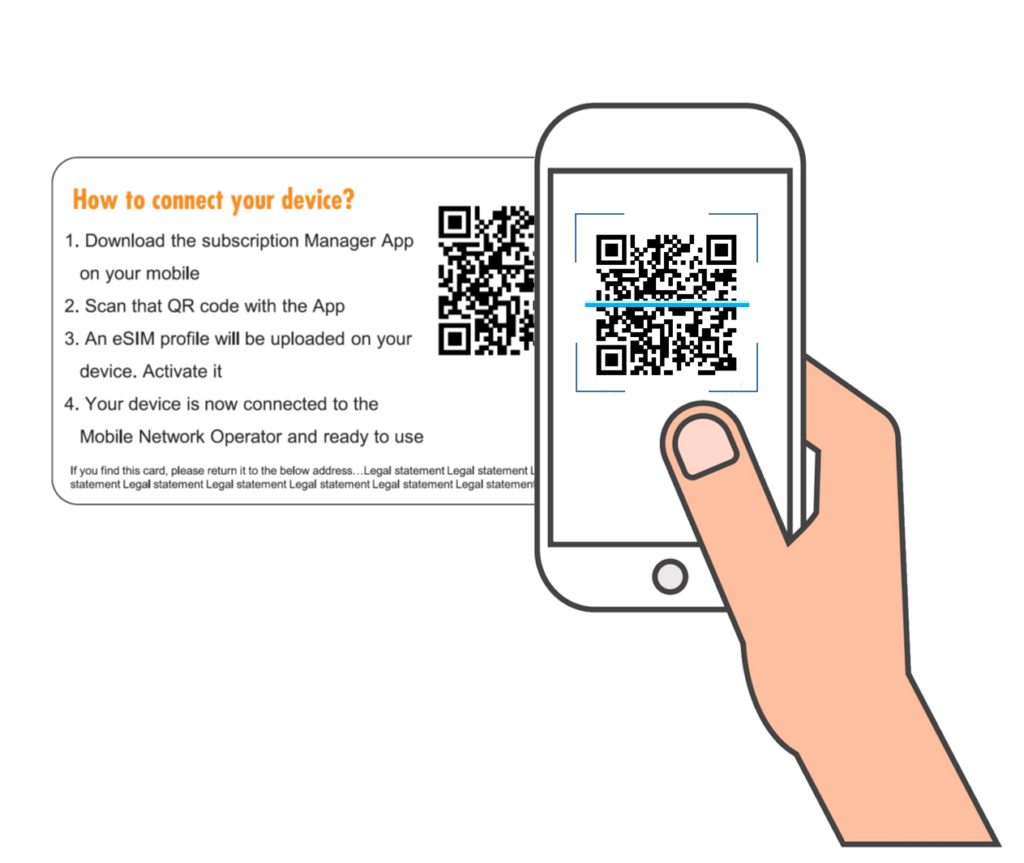First, let’s understand an overview of eSIM Technology.
eSIM(embedded SIM): The embedded SIM (also called eSIM or eUICC) is a new secure element designed to remotely manage multiple mobile network operator subscriptions and be compliant with GSMA specifications.
As defined by GSMA, the term eSIM refers to the explicit functionality of the operating system to store multiple MNO profiles and perform remote provisioning and management of these profiles after issuance. This allows the separation of the profile (i.e. the connectivity) lifecycle from the hardware lifecycle, which is not available with the plastic SIM card that links the profile to the card at the time of production in a non-reprogrammable way.
What is Subscription Manager – Discovery Server (SM-DS)?
The purpose of an SM-DS is to hold a list of profiles that are available to an end user in a consumer eUICC environment. This discovery service is currently operated by the GSMA although there are plans for alternative discovery services to be offered in the future.
How it works:
To simplify the customer experience of connecting consumer devices, the Discovery Service enables users with an established mobile subscription to download a profile fully automated without any manual interaction.

-
Once the user has signed a mobile subscription contract with an operator, a profile is allocated in the operator’s SM-DP+. The SM-DP+ informs the connected Discovery Server that it has a profile waiting for the user’s device, identified by its EID (eSIM Identifier).
- The device sends its EID (eSIM ID) to the Discovery Server. If a profile is indeed registered for its EID, the Discovery Server returns the SM-DP+ address from which the profile can be downloaded.
- The device contacts the SM-DP+ and the profile is downloaded and installed on its eSIM. Following profile activation, the user has access to the subscribed services.
What Is SM-DP+ Address in eSIM?
If your phone is eSIM compatible and you want to use eSIM, then you need to set it up. This is when you may have heard about SM-DP+ Address. This is a term often appearing in the email sent from your eSIM provider that consists of your purchased eSIM information.
The SM-DP+ Address, which stands for Subscription Manager Data Preparation Plus Address, is a unique code that pinpoints a remote server pivotal in managing eSIM profiles.
In simple terms, the SM-DP+ Address establishes secure communication between your device and back-end servers hosting the intelligence-driving eSIM tech. It’s the bridge enabling authenticated sharing of sensitive eSIM subscription data with your smartphone, smartwatch, or tablet.
So, If you have an SM-DP+ address and an activation code, you can download an eSIM profile and connect to the mobile network of the associated operator. As a consequence, it will be possible to start using the services you have contracted, such as calls, internet connection or SMS.

How Do You Find The SM-DP+ Address?
While eSIM can mostly be activated by scanning a QR code consisting of an eSIM profile inside, there can be cases where you may need to or choose to activate the eSIM manually. Let’s examine how to utilize this server address to configure eSIMs manually on supported devices:
On iPhone
- Access Settings » Cellular Data » Tap Add Cellular Plan
- Select Enter Details Manually
- Input your unique SM-DP+ Address and Activation Code into respective fields
- Complete setup prompts to finish iOS eSIM installation

On Android Devices
- Navigate to Settings » Network & Internet » SIMs
- Choose Add eSIM profile » Enter code manually
- Enter your Activation Code in the allocated field
- Input your eSIM subscription’s assigned SM-DP+ Address when prompted
- Follow setup instructions to complete Android eSIM activation
Conclusion
- The eSIM profile is a virtual profile that stores the user’s subscription and network settings. It allows the user to connect to the corresponding mobile network.
- The eSIM profile is stored in the operator’s eSIM subscription management server (also known as the SM-DP+ which stands for Subscription Manager Data Preparation). This then securely downloads the profile onto the eUICC. Once the operator’s BSS creates the subscription, it informs the SM-DP+ about the availability of this subscription and requires the creation of an eSIM profile.
References
- GSMA.
- www.quectel.com
- achelos GmbH.
- www.gigago.com
- www.airalo.com
- www.asianesim.com
